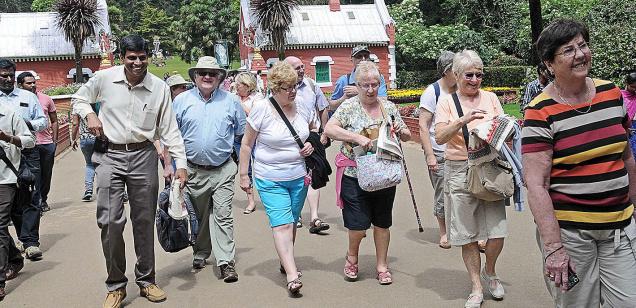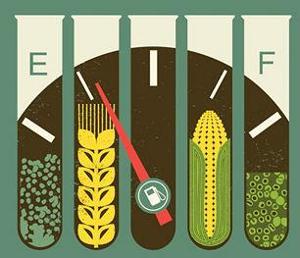Monthly Archives: October 2015
Coimbatore govt hospital performs 100 cochlear transplant surgeries in two years

Coimbatore :
The Coimbatore Medical College and Hospital (CMCH) has performed 100 cochlear transplant surgeries in the last two years, becoming the first government hospital to reach this number.
All the surgeries had been performed under the chief minister’s comprehensive health insurance scheme, said doctors.
The CMCH is the only other government hospital, besides Madras Medical College, approved to perform cochlear transplants under the Tamil Nadu Health Systems Project.
Doctors said they performed their first cochlear transplant surgery on August 10, 2013 and performed the 100th surgery on October 1 this year.
“All the surgeries were successful and all the children operated have recovered and are doing extremely well,” said professor and head of the ENT department Dr V Aravindhan.
The insurance scheme makes cochlear transplant surgeries free for children between 0 to 6 years of age.
“Cochlear transplants are usually done on stone deaf children or those who are severely hard of hearing,” said ENT professor Dr Ali Sultana.
“But since the implant is something that stimulates an auditory nerve in the brain, and later fills the auditory cortex with sounds and information, children learn to use it and benefit better,” he said. “Thus they can speak on the phone and have face to face like conversations like normal people.”
Earlier cochlear transplants were being done only at private hospitals because of the implant was expensive—Rs 5.1 lakh even for the basic low-end one. Now since the scheme allots Rs 7 lakh for the surgery, government hospitals have now begun performing the surgery.
“This includes pre-surgery screenings tests, the surgery, implants, post-surgery complications and a one-year rehabilitation program for the children,” said Dr Aravindhan.
The CMCH has tied up a private institute called “Hearing Aid Centre” to provide the one-year rehabilitation post-surgery.
“They with a team of audiologists and speech therapists provide audio verbal therapy to children, who will start filling their memory cortex with sounds and noises, and slowly start repeating them as part of speech processing. Within the first three months, they start speaking simple words,” said Dr Sultana. `
While cochlear implant surgeries are being done under the state comprehensive health insurance scheme in private hospitals too, other screening and post-surgery costs start piling up, say patients.
source: http://www.timesofindia.indiatimes.com / The Times of India / News Home> City> Chennai / by Pratiksha Ramkumar, TNN / October 05th, 2015
Visitors from London revisit Ooty in search of memories

Twenty two visitors from England have come all the way to Udhagamandalam not for a holiday but to trace the roots of their grand parents who lived and worked here.
But they were nevertheless delighted to see places such as Botanical garden and Charing Cross which reminded them of places back home. Such as the Adam foundation at Charing Cross which is there in London as well.
Many Britishers continued to live in Udhagamandalam after India’s Independence. A lot of them have been laid to rest at the cemeteries at Stephens and Thomas Church.
Locals say that not a year passes by without a tourist from England coming to the hill station looking for memories. Many of them recognise the places as they have heard about them from their grandparents who lived and worked here. The 22-member group included Freddy Shaw who came to see the places where his father worked and lived. The 22-member team is on a 16-day tour of South India and they reached the hill station on Saturday.
Freddy said that his father worked with the Army from 1944-46 at Duley camp of 22 Madras Unit.
V. Stalin who is a tour manager and guide took the visitors to the Botanical garden, Dodabetta and Stone house (the present Govt Arts College) which was the first building in Udhagamandalam built by the Britishers. They also visited Toda tribal hamlets and St Stevens church. A train ride on the NMR and a trip to the tea estates are also on the cards.
source: http://www.thehindu.com / The Hindu / Home> National> Tamil Nadu / by V. S. Palaniappan / Udhagamandalam – October 04th, 2015
1
An app for Kangayam cattle conservation
Tracking a genetically pure Kangayam bull/cow for mating and identifying a genuine buyer for Kangayam cattle are now just an app away.
V. Sivakumar, an Indian-American engineer from Tirupur and his team regularly rescue Kangayam bulls from slaughter.
He has introduced the mobile app as an extension of rescue/rehabilitation/conservation activities to improve breeding of genetically pure Kangayam cattle and ensure sales to only needy farmers.
He had recently launched ‘Konga Goshala’ to rehabilitate the Kangayam cattle, “Both these steps are aimed at saving the Kangayam cattle from extinction. When it comes to sales, the app will help prevent the cattle from falling into the hands of middlemen who could resell the animal to slaughterers as the buyers too have to register first”, he told The Hindu . The registration of names into the database is being done free.
Explaining its salient features, Mr. Sivakumar said that the app would function on Android based mobile phones and iPhones with Tamil as the language to enable farmers use it comfortably.
“Only those farmers having their addresses within the Kangayam tract that spreads over Tirupur and some adjoining districts, are allowed to join the group”.
The application enables a farmer to locate a bull which is near to their location for mating with the cow.
“For sales too, features are embedded to help buyers easily identify the cattle of their choice,” said Mr. Sivakumar. The marketing of the app will be confined to within the farming community.
source: http://www.thehindu.com / The Hindu / Home> National> TamilNadu / by R. Vimal Kumar / Tirupur – October 02nd, 2015
Scientists clone Punnai tree varieties rich in biofuel
Coimbatore :
Popularly known in our old Tamil folklore as the ‘Tree that cures’ or as the ‘Tree that protects’, the Punnai tree’s population along our coastal and river belts has been dwindling in the last three decades owing to its rich timber value. But scientists have now begun repopulating this tree for its biofuel and healing properties.

The bio-fuel produced from Punnai tree can run a machine like a pumpset or even a generator, say researchers. Scientists with the Institute of Forest Genetics and Tree Breeding (IFGTB) have managed to clone a few varieties of this tree, scientifically called as Calophyllum Inophyllum, rich in oilseeds, rather than timber.
“Not many people know that the oil extracted from the tree’s seeds can be used as a biofuel,” says the scientist who has been researching tree-borne oils for the past decade, Anandalakshmi Ravichandran. “It can be used to run pumpsets, generators and a lot of machinery that otherwise require petrol or diesel,” she says. A five-year-old well-looked Punnai tree can give a minimum of 4.2 litres of biofuel a year, or 2.1 litres per harvest.
“A tree older than five-years, which is watered well and fed bio-fertilizers, will produce at least 4-10 kg of oilseeds per harvest, which in turn produces 1kg to 2.5kg of kernel, from which oil can be extracted,” she added. Oilseeds from the tree can be harvested at least twice a year.
The tree, which is found in many parts of South India like the Andaman Islands, Kasargod, Sengottai, Cuddalore, Kutralam, Puducherry and Karaikal, unlike most can even survive on loose soil or sandy soil. “These trees are like mangroves and grow in the wild in the same conditions,” says Ravichandran, also the HOD of the seed technology department at IFGTB.
Scientists recommend that farmers choose the number of trees they want to cultivate based on their oil requirement. Around 35 trees can be planted in a one-acre land either on the perimeter or as intercrop. “These trees are natural wind shields, because they initially used to stop the salt carrying sea breeze from blowing into the agricultural lands,” says Ravichandran. The institute has sold 600 units of Punnai seedlings so far.
The drawbacks of growing or cultivating the tree is that it takes at least five to six years to mature, and start yielding fruits or oilseeds. “It will grow upto 15m in height and start producing even more than 10kg of fruits after its 10{+t}{+h} year,” she says. “Nobody realises this because they cut it down after it reaches its fifth year for timber, which is used to make catamarans and furniture,” she adds.
After a lot of research into Punnai trees in its natural habitats, scientists short-listed 156 genetically superior trees across Kerala, Karnataka, Tamil Nadu and Andamans.
Seedlings of these varieties are on sale at the IFGTB nursery for Rs20
source: http://www.timesofindia.indiatimes.com / The Times of India / News Home> City> Coimbatore / TNN / October 01st, 2015